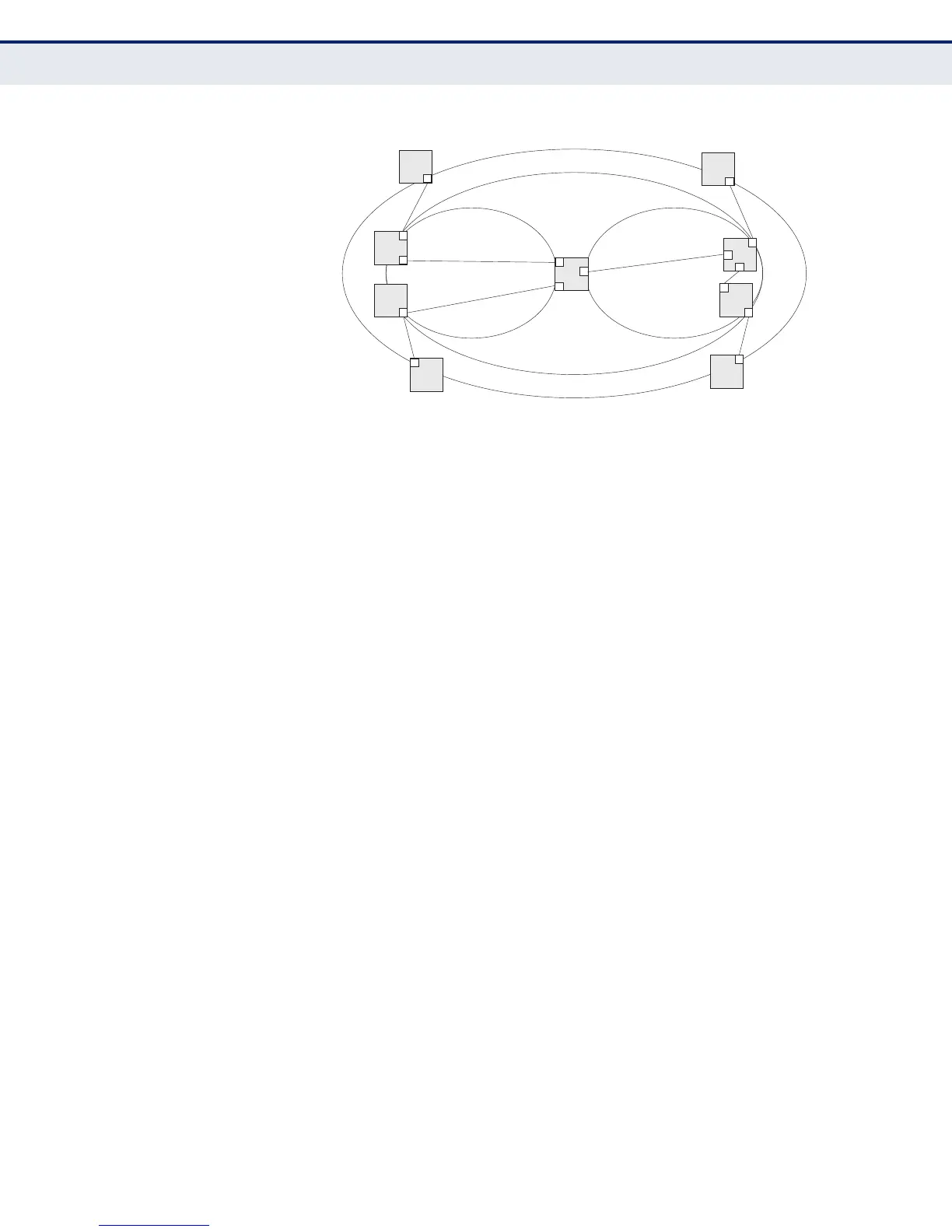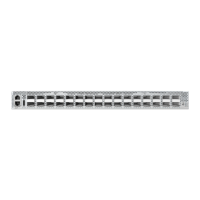C
HAPTER
14
| Basic Administration Protocols
Connectivity Fault Management
– 516 –
Figure 295: Multiple CFM Maintenance Domains
Note that the Service Instances within each domain shown above are
based on a unique maintenance association for the specific users,
distinguished by the domain name, maintenance level, maintenance
association’s name, and assigned VLAN.
Basic CFM Operations
CFM uses standard Ethernet frames for sending protocol messages. Both
the source and destination address for these messages are based on
unicast or multicast MAC addresses, and therefore confined to a single
Layer 2 CFM service VLAN. For this reason, the transmission, forwarding,
and processing of CFM frames is performed by bridges, not routers.
Bridges that do not recognize CFM messages forward them as normal data.
There are three basic types of CFM messages, including continuity check,
link trace, and loop back.
Continuity check messages (CCMs) are multicast within a single Service
Instance (i.e., a specific MA), allowing MEPs to discover other MEPs within
the same MA, and MIPs to discover MEPs. Connectivity faults are indicated
when a known MEP stops sending CCMs, or a remote MEP configured in a
static list does not come up. Configuration errors, such as a cross-connect
between different MAs, are indicated when a CCM is received with an
incorrect MA identifier or maintenance level.
Loop back messages are used for fault verification. These messages can be
sent using the MAC address of any destination MEP within the same MA. If
the target MEP’s identifier has been discovered through CCM messages,
then a loop back message can also be sent using the MEPs identifier. A
reply indicates that the destination is reachable.
Link trace messages are used for fault verification. These messages are
multicast frames sent out to track the hop-by-hop path to a target MEP
within the same MA. Responses provide information on the ingress, egress,
and relay action taken at each hop along the path, providing vital
information about connectivity problems. Responses allow the sender to
discover all of the maintenance points that would be traversed by a data
frame sent to the target MAC address.
Customer MA
Provider MA
Operator 1 MA Operator 2 MA
C
C
C
C
O
1
O
1
P
O
2
O
2
P
P
O
1
O
2
P

